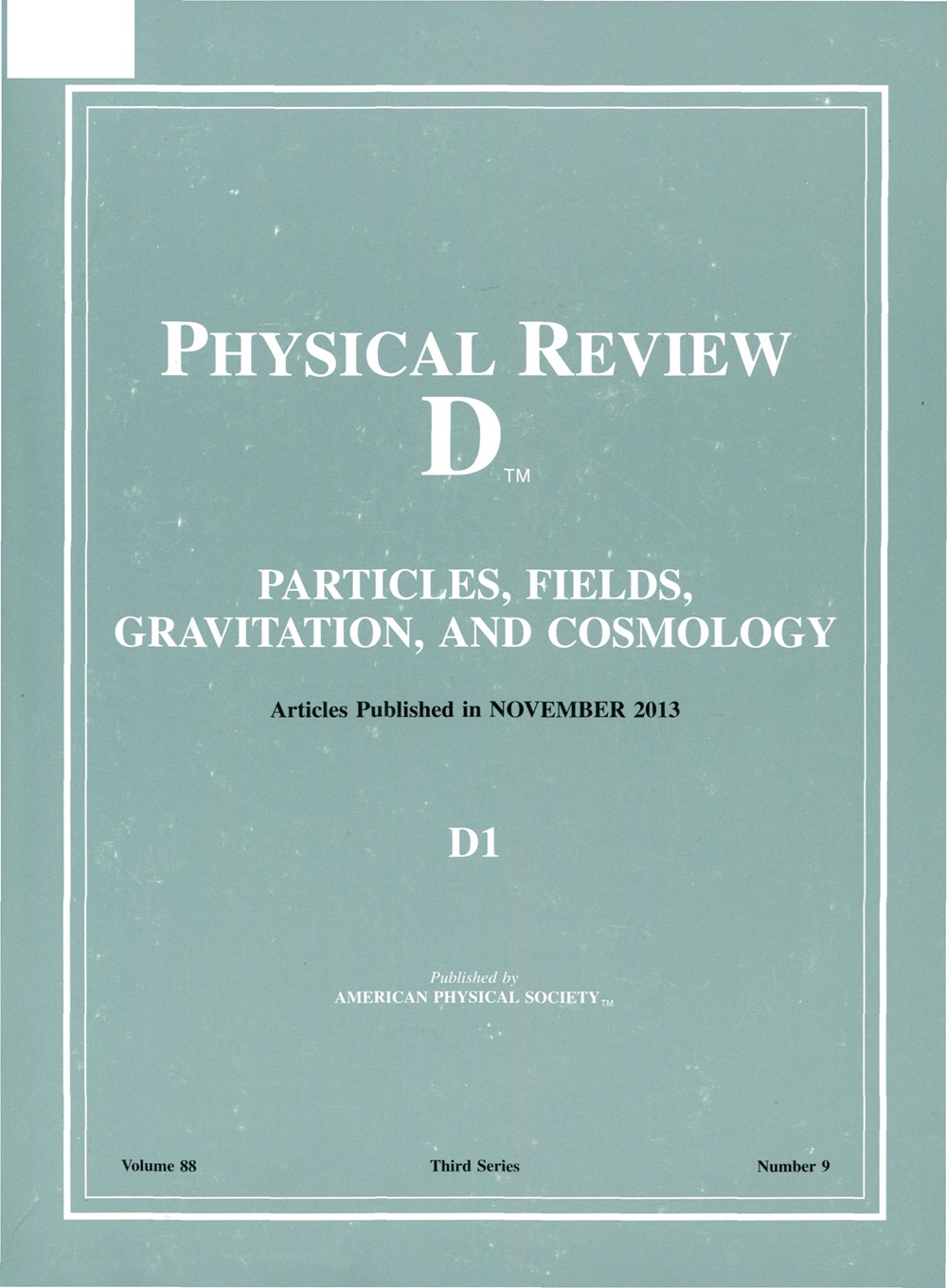Dynamical black hole entropy beyond general relativity from the Einstein frame
IF 5.3
2区 物理与天体物理
Q1 Physics and Astronomy
引用次数: 0
Abstract
Recently Hollands proposed a new formula for the entropy of a dynamical black hole for an arbitrary theory of gravity obtained from a diffeomorphism covariant Lagrangian via the Noether charge method []. We present an alternative, pedagogical derivation of the dynamical black hole entropy for f(R) gravity as well as canonical scalar-tensor theory by means of conformal transformations. First, in general relativity we generalize Visser and Yan’s pedagogical proof of the nonstationary physical process first law to black holes that may not be in vacuum, and give a pedagogical derivation of the second-order behavior of the dynamical black hole entropy for vacuum perturbations by considering the second-order variation of the Raychaudhuri equation. Second, we apply the derivation for general relativity to theories in the Einstein frames, and then recast the conclusions in their original frames. We show that the dynamical black hole entropy formulas of these theories satisfy both the nonstationary physical process first law and the nonstationary comparison first law via the Einstein frame. We further study the second-order behavior of the dynamical black hole entropy for vacuum perturbations, and observe that the second law is obeyed at second order in those theories. Using the Einstein frame, we also determine the relationship between the dynamical black hole entropy and the Wald entropy of the generalized apparent horizon in the original frame.爱因斯坦框架下超越广义相对论的动态黑洞熵
最近Hollands提出了一个新的动态黑洞熵公式,用于通过Noether电荷法从微分共变拉格朗日量中得到的任意引力理论[]。我们提出了f(R)引力的动态黑洞熵的另一种教学推导,以及通过保角变换的规范标量张量理论。首先,在广义相对论中,我们将Visser和Yan的非平稳物理过程第一定律的教学证明推广到可能不在真空中的黑洞,并通过考虑Raychaudhuri方程的二阶变化,给出真空扰动下动态黑洞熵的二阶行为的教学推导。其次,我们将广义相对论的推导应用于爱因斯坦框架中的理论,然后在其原始框架中重新推导结论。我们通过爱因斯坦坐标系证明了这些理论的动态黑洞熵公式既满足非定常物理过程第一定律,也满足非定常比较第一定律。我们进一步研究了真空微扰下动态黑洞熵的二阶行为,并观察到这些理论在二阶处遵循第二定律。利用爱因斯坦坐标系,我们还确定了动力学黑洞熵与原始坐标系中广义视界的Wald熵之间的关系。2025年由美国物理学会出版
本文章由计算机程序翻译,如有差异,请以英文原文为准。
求助全文
约1分钟内获得全文
求助全文
来源期刊

Physical Review D
物理-天文与天体物理
CiteScore
9.20
自引率
36.00%
发文量
0
审稿时长
2 months
期刊介绍:
Physical Review D (PRD) is a leading journal in elementary particle physics, field theory, gravitation, and cosmology and is one of the top-cited journals in high-energy physics.
PRD covers experimental and theoretical results in all aspects of particle physics, field theory, gravitation and cosmology, including:
Particle physics experiments,
Electroweak interactions,
Strong interactions,
Lattice field theories, lattice QCD,
Beyond the standard model physics,
Phenomenological aspects of field theory, general methods,
Gravity, cosmology, cosmic rays,
Astrophysics and astroparticle physics,
General relativity,
Formal aspects of field theory, field theory in curved space,
String theory, quantum gravity, gauge/gravity duality.
 求助内容:
求助内容: 应助结果提醒方式:
应助结果提醒方式:


